Exploring the Embroidered Dashiki: A Cultural Journey
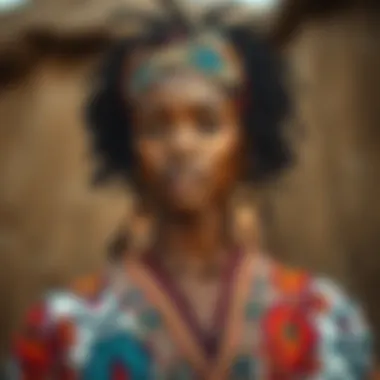
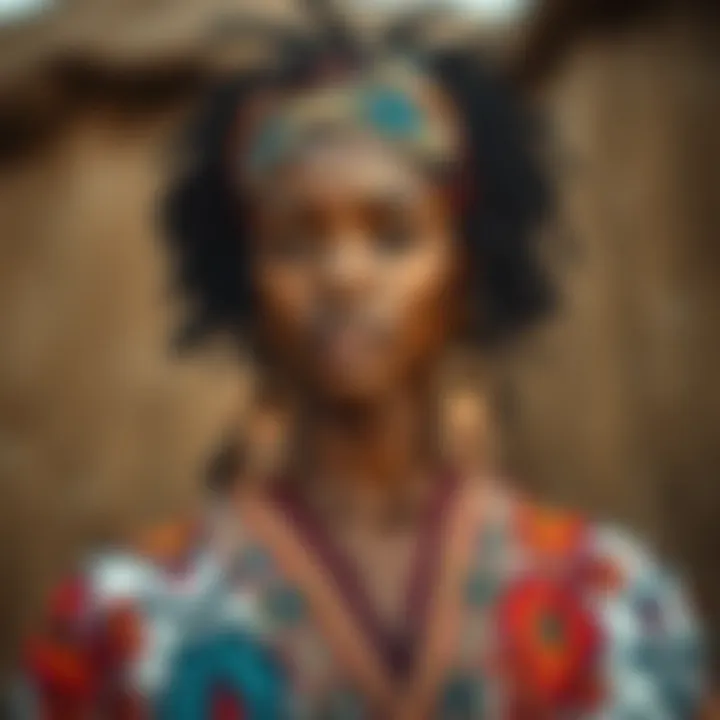
Intro
The embroidered dashiki stands as a vivid representation of African culture, blending tradition with modern fashion. Originating from West Africa, this garment is not only a piece of clothing but also a canvas for rich storytelling. The intricate designs and vibrant colors mirror the diverse cultures from which they emerge. As the dashiki weaves its way into global fashion, understanding its roots and significance becomes increasingly relevant.
In today's world, where modernity often overshadows history, the dashiki offers a refreshing reminder of cultural identity. This article will explore every facet of the embroidered dashiki, from its origins to its evolution as a contemporary fashion statement. We'll delve into the variety of styles that exist, the materials that bring these artworks to life, and the cultural implications that embroidery holds. Furthermore, practical styling tips will be shared, allowing individuals to embrace this unique attire in ways that honor its heritage.
Clothing Trends Analysis
The momentum of the dashiki in today's fashion scene cannot be understated. To appreciate its journey, it is essential to look at broader clothing trends that have influenced and shaped its presence.
Current Trends in Seasonal Fashion
Currently, the embroidered dashiki has found a prime spot in seasonal fashion. With its expressive patterns and breathable fabric, designers are fusing traditional motifs with contemporary silhouettes. Social media platforms are abuzz with influencers showcasing their unique takes on this garment, drawing in a diverse audience. The marriage of tradition and modernity has made the dashiki appealing to various demographics. Now, it’s not uncommon to see a dashiki paired with denim shorts or layered under tailored jackets, demonstrating its versatility.
- Sustainable Fashion: The rise of eco-conscious consumerism has also played a part. Many artisans handcraft the dashiki, ensuring ethical production while preserving traditional techniques.
- Cultural Appreciation: This garment symbolizes a celebration of African heritage. As awareness grows, individuals seek to wear the dashiki not only as a fashion statement but as a tribute.
Iconic Styles Through Decades
The dashiki has evolved through the decades, reflecting changing fashions while keeping its core identity intact. From the bold, oversized designs of the 1960s and 70s, often associated with African independence movements, to the modern slim-fit versions, the dashiki has consistently adapted.
- Motifs of the 1970s: During this period, the use of batik and tie-dye became prominent, which helped in making the dashiki a symbol of cultural pride.
- Contemporary Adaptations: Today’s dashikis embrace varied textures and innovative designs, including the incorporation of digital prints that merge tradition with technology.
The journey of the dashiki illustrates a dynamic response to cultural shifts, fashion trends, and personal expression.
"A garment is much more than fabric and thread; it’s a representation of history, identity, and creativity woven into its very fibers."
With this understanding, let's now shift our focus to styling tips and techniques that can help individuals effectively integrate the embroidered dashiki into their wardrobes.
Historical Origins of the Dashiki
The embroided dashiki holds a prominent place in the tapestry of African cultural symbolism and fashion. To understand its significance, we first turn our attention to its historical origins. The dashiki is more than just a garment; it evokes feelings and stories that speak volumes about the roots from which it sprang. The rich narratives of Africa, steeped in age-old traditions, find expression through the fabrics and patterns of dashikis. By delving into the historical backdrop of this garment, we gain insights into its evolution, cultural relevance, and status as a global symbol of identity and heritage.
Early Development in West Africa
The foundation of the dashiki can be traced back to the early communities of West Africa, where traditional garments reflected both functionality and artistry. Initially, the dashiki emerged as a loose-fitting shirt, often made from brightly colored cloth and adorned with unique embroidery. This style was not merely about aesthetics; it symbolized status, community ties, and cultural narratives. Garments were crafted from locally sourced materials, using techniques that had been passed down through generations.
Families often had a tailor for special occasions who would create intricate designs to differentiate tribe-specific styles. Moreover, the colors and patterns were steeped in meaning, with hues representing various aspects of life, such as spirituality and land.
As the dashiki developed over the years, it began to encapsulate the very essence of African identity. Most importantly, it became a canvas for storytelling, with each stitch unveiling tales of ancestry, tradition, and significant life events. The sheer variety in styles revealed a broad spectrum of cultural practices and was a way to maintain a visual sense of history.
"The dashiki is not just a piece of clothing; it is a living record of cultural heritage, telling stories rooted in the heart of Africa."
The Dashiki in the Global Context
By the mid-20th century, the dashiki began to transcend borders, moving from localized design to a worldwide phenomenon. As African nations sought independence, the dashiki resurfaced as a symbol of pride and self-expression, adorned by leaders and revolutionaries. This garment gained visibility in the global fashion scene, especially during the Civil Rights Movement in the United States, where it became associated with Black pride and cultural assertion. During this period, African American figures adopted dashikis, further intertwining the garment with a narrative of empowerment and heritage.
The globalization of the dashiki allowed for cross-cultural exchanges, leading to a fusion of styles that retained their African roots while embracing modern trends. Today, designers from around the world draw inspiration from this emblematic piece, infusing contemporary designs with traditional elements.
Despite its international appeal, the cultural significance of the dashiki remains intact. It serves as a powerful reminder of Africa’s rich history and vibrant cultures, even while being reinterpreted in various contexts. In summary, the dashiki embodies a link between the past and present, bridging local heritage with global narratives.
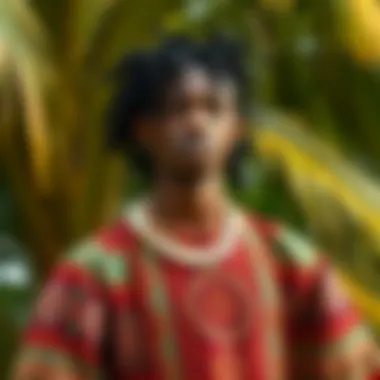
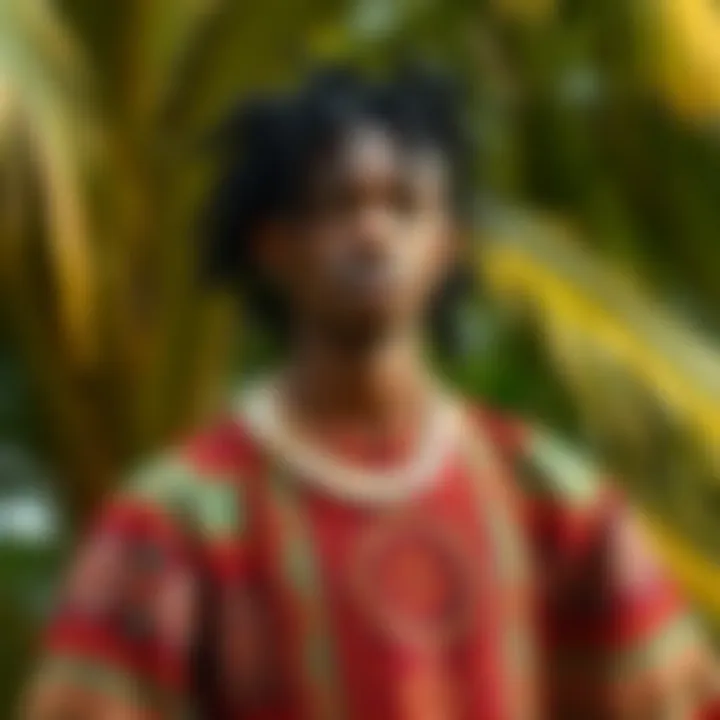
Characteristics of the Embroidered Dashiki
The embroidered dashiki captures historical, cultural, and aesthetic elements uniquely intertwined in its fabric and design. This section elaborates on the characteristics defining the embroidered dashiki, detailing its fabric choices, embroidery techniques, and the deep meanings behind its colors. These characteristics not only showcase the dashiki's beauty but also reflect the rich cultural heritage of the communities that create and wear them.
Fabric Choices and Their Significance
The selection of fabric is crucial to the identity and quality of the dashiki. Traditionally, dashikis are crafted from breathable textiles like cotton and linen, which are conducive to the warm climates of West Africa. However, contemporary interpretations have broadened this spectrum. The choice of fabric impacts not only the garment's aesthetic appeal but also its functionality, durability, and comfort.
- Cotton: This fabric is widely favored due to its breathability, affordability, and versatility. It holds dye well, which is essential for the vibrant patterns often associated with dashikis.
- Silk: For special occasions, some may opt for silk, lending an air of luxury and elegance to the piece.
- Synthetic Blends: Today, there are also dashikis made from polyester blends, which allow for intricate patterns and easy maintenance.
Each of these fabrics comes loaded with meaning. The choice might symbolize a particular tradition or current fashion trends. A dashiki made from local cotton may represent cultural pride and sustainability, while a silk dashiki might signify celebration or festivity.
Embroidery Techniques and Styles
Embroidery on dashikis is not merely decorative; it tells stories and preserves cultural practices. The skills passed down through generations reflect the artistry and craftsmanship involved.
There are several techniques used in embroidering dashikis:
- Appliqué: This method involves sewing one piece of fabric onto another, creating a layered, textured appearance.
- Traditional Hand Embroidery: This often handiwork captures local motifs, symbols, and patterns significant to specific cultures or regions. Each stitch is imbued with heritage.
- Machine Embroidery: While less personal, machine techniques allow for mass production of intricately designed dashikis, making them accessible to a wider audience.
These techniques lend depth to the garment, ensuring that even as trends change, the tradition of storytelling through craft endures.
Color Symbolism in Dashiki Designs
Colors in dashiki designs are not chosen at random; they carry meanings that resonate deeply with the cultural contexts from which they originate. The embroidery often integrates a palette that speaks to identity, spirituality, and the environment.
- Black: Typically symbolizes strength and resilience.
- Green: Represents fertility, harvest, and the lushness of nature.
- Red: Often linked to the struggles faced in the past and present, invoking a connection to heritage and history.
- Yellow and Gold: These colors celebrate joy, wealth, and prosperity.
Together, these colors create vibrant narratives that enable wearers to express their stories, aspirations, and cultural connections. The combination of hues found in the embroidery makes each dashiki not just clothing but rather a dialogue of colors conveying messages far deeper than adornment.
In the world of the embroidered dashiki, every fabric, stitch, and color breathes life to its cultural narrative, making it not just a garment but a rich tapestry of history and identity.
This rich amalgamation translates into a garment that is appreciated not only for its aesthetic appeal but also for its foundational role in promoting cultural appreciation and sustainable fashion.
Cultural Significance of Dashikis
The embroidered dashiki is more than just an article of clothing; it embodies a rich tapestry of history, identity, and cultural expression. For many, its significance stretches beyond the fabric and thread, serving as a symbol of pride and a connection to ancestral roots. The dashiki represents the essence of African identity, depicting cultural heritage in a form that resonates with both traditional and contemporary sensibilities.
Representation of African Identity
The dashiki stands as a powerful emblem of African identity, resonating deeply with communities across the continent and beyond. When worn, it often serves as a declaration of heritage, reflecting an appreciation for the rich cultures that birthed it. For instance, many individuals don the dashiki during significant events—such as family gatherings, festivals, or important ceremonies—where its vibrant colors and intricate patterns spark conversations about lineage and ancestral histories.
Furthermore, the designs often carry specific meanings; they can signal a person's tribal affiliation or demonstrate respect for cultural traditions.
Dashikis in African Ceremonies
The dashiki plays a critical role in ceremonies throughout Africa, often marking significant life events. From weddings to naming ceremonies, the dashiki is not merely a fashion choice; it often signifies a rite of passage. For example, at weddings, both couples may don matching embroidered dashikis to symbolize unity, while participants from the family and community often wear their own unique styles to exhibit individual heritage and pride.
During these occasions, the dashiki serves as a visual narrative, telling stories not just through its patterns but also through the emotions associated with the events being celebrated.
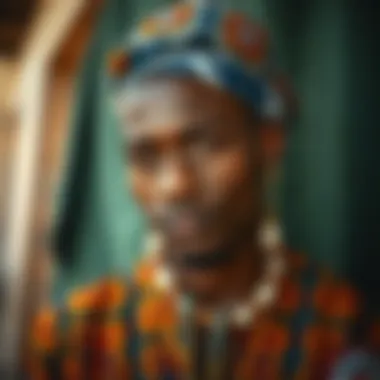
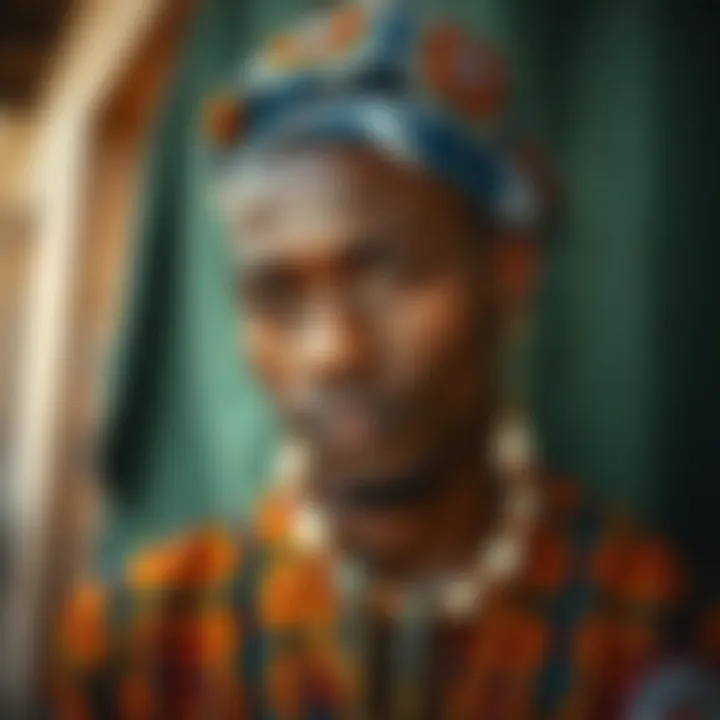
"A dashiki seen at a wedding is not just fabric; it’s a woven story, a thread of lineage gathering together in joy."
Impact on Pan-African Movements
In the realm of social movements, the dashiki has also played a pivotal role in the Pan-African movements of the 20th century. During the 1960s and 70s, as African nations fought for independence, the dashiki surged in popularity among activists and leaders as a symbol of resistance against colonialism and cultural erasure. Icons like Marcus Garvey and Malcolm X adopted the dashiki, elevating its status as an assertion of African pride and solidarity. This cultural garment became a rallying cry for unity among the African diaspora, transcending geographical borders and fostering a sense of belonging.
The evolution of the dashiki from traditional wear to a symbol of activism highlights its versatility and enduring relevance. It continues to inspire a sense of solidarity that today fuels social justice movements and fosters dialogues about identity and representation.
In summary, the cultural significance of the embroidered dashiki lies in its ability to weave together history, individuality, and collective identity. By wearing the dashiki, individuals not only celebrate their roots but also contribute to a larger narrative that embraces culture, community, and continuity.
Modern Interpretations of the Dashiki
The dashiki is not just a remnant of history; it has evolved into a dynamic symbol of identity and expression in contemporary fashion. Its adaptability and charm have captured the imagination of designers and fashion enthusiasts across the globe. This section delves into modern interpretations of the dashiki, highlighting its influence on contemporary fashion trends, its adaptation within Western styles, and the role of social media in boosting its popularity.
Contemporary Fashion Trends
The dashiki has made its mark in contemporary fashion through striking designs that marry tradition with modern aesthetics. Designers today craft dashikis using innovative patterns, colors, and cuts, making the garment appealing to a younger demographic eager for unique ways to express their cultural heritage. This trend sees the dashiki reincarnated in various forms, including fitted styles, asymmetrical cuts, and even hybrid pieces that blend the dashiki with elements of Western wear.
- Layering: One popular trend is layering dashikis over basic tees or turtlenecks, allowing for a stylish yet laid-back look.
- Streetwear Influence: Fashion brands are also incorporating dashiki motifs into streetwear, showcasing vibrant prints on oversized hoodies and joggers.
- Sustainable Practices: Eco-conscious designers embrace the dashiki's hand-crafted roots by promoting sustainable practices, appealing to a growing market interested in ethical fashion choices.
Additionally, events like fashion weeks have seen the dashiki grace the runway, where it is often featured alongside high-fashion collections, reinforcing its status as a versatile piece that transcends boundaries.
Adaptation in Western Fashion
The transition of the dashiki into Western fashion has generated a conversation about cultural appropriation versus appreciation. High-profile celebrities and influencers wearing dashikis have brought them into mainstream fashion, often sparking debates about authenticity and respect for the garment's origins.
- Celebrity Influence: Stars like Beyoncé and Pharrell Williams have donned dashikis, integrating them into their signature styles while also acknowledging African roots.
- Designer Collaborations: Collaborations between African and Western designers are on the rise, offering collections that respect the dashiki's heritage while infusing contemporary flair.
- Fashion Consciousness: The current climate encourages consumers and brands alike to engage with the story behind the pieces they choose to wear, leading to a greater appreciation of cultural significance.
Ultimately, the dashiki represents not just a fashion statement but also a dialogue about identity, heritage, and the complexities of globalization.
Impact of Social Media on Dashiki Popularity
In today’s digital age, social media plays a pivotal role in shaping fashion narratives. The dashiki’s resurgence can largely be attributed to platforms such as Instagram and TikTok, where young individuals share personal styles and cultural pride.
"The rise of the dashiki on social media signifies a powerful connection to cultural identity and community."
- Influencer Campaigns: Many influencers champion the dashiki, showcasing it in ways that resonate with their audiences—be it through traditional ceremonies or modern-day casual settings.
- Hashtags and Trends: Hashtags like #DashikiStyle or the launch of specific challenges promote visibility and encourage participation, allowing users to explore and participate in the culture and fashion narratives surrounding the dashiki.
- Virtual Communities: Social media has fostered communities focused on African fashion, where users share styling tips, DIY projects, and stories behind their attire, thus creating a sense of belonging and pride.
As the dashiki finds a place in the wardrobe of many, it also solidifies its status as a cultural icon that continues to adapt and inspire in the fast-evolving world of fashion.
Fashioning the Dashiki Today
The dashiki stands as a timeless testament to not just cultural significance but also the evolution of fashion trends in the modern age. Today, embracing this classic garment isn’t merely about wearing a piece of clothing; it's about honoring rich heritage while making bold fashion statements. As society becomes increasingly aware of sustainability and cultural representation, the dashiki fits elegantly into contemporary wardrobes, merging traditional aesthetics with today’s fashion sensibilities.
One of the fascinating aspects of the dashiki today lies in its broad versatility. You can wear it casually for a day out with friends or elevate it for special occasions. Incorporating dashikis into everyday wear helps you get in touch with your roots, create conversations, and promote diversity. Adopting this garment into your lifestyle offers a vibrant expression of identity that resonates with your personal style, connecting the present with past traditions.
Incorporating Dashikis into Everyday Wear
Incorporating dashikis into daily attire can feel daunting at first, but there are ways to make it seamless and stylish. Here are a few practical tips:
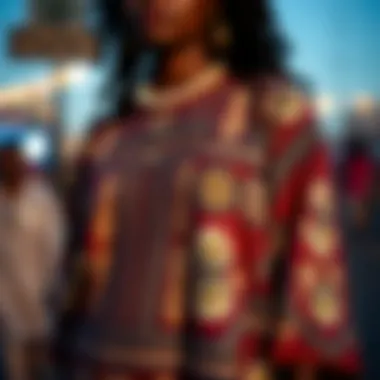
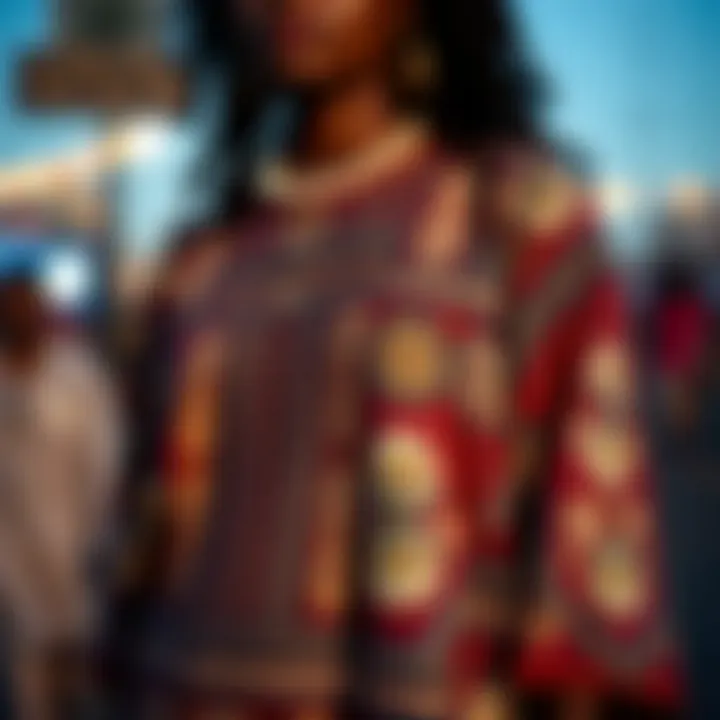
- Layering: Dashikis can be worn over fitted tops or turtlenecks, adding an element of coziness and style. A plain white t-shirt underneath a vibrant dashiki creates a blend of simplicity and flair.
- Mix and Match: Pairing a dashiki with jeans or tailored pants provides a comfortable yet stylish look. Opt for neutral colors in your bottom wear to allow the dashiki to shine.
- Footwear Choices: Footwear can elevate or tone down the look. Strappy sandals can work for a casual outing, while smart shoes can amp up your style for more formal events.
- Accessorizing: Choose accessories that complement your dashiki’s colors or patterns. Beaded jewelry or handcrafted bags can create a cohesive look that respects the garment’s origins while still feeling modern.
Ultimately, wearing a dashiki as everyday attire speaks volumes about cultural appreciation and personal expression.
Styling Tips for Various Occasions
Whether you're preparing for a casual get-together, a wedding, or a cultural event, styling a dashiki can vastly differ based on the occasion. Here are some handy suggestions:
- Casual Gatherings: For a relaxed day out, simply don a dashiki with well-fitted shorts or denim. Keep the accessories light and minimal. Throw on some comfortable sneakers for added ease.
- Formal Events: Dress up your dashiki with tailored trousers. A dashiki crafted from finer materials—such as silk or cotton blends—paired with elegant loafers will make for an impressive ensemble. Adding a light blazer over the top can further elevate the appearance.
- Cultural Celebrations: When attending cultural festivals or events, showcasing the full artistry of the dashiki is important. Use bold patterns and vibrant colors. Layering with a matching shawl or headwrap can enhance the cultural essence.
“Wearing a dashiki isn't just about fashion; it’s about embracing a story steeped in history.”
Incorporating the dashiki into various occasions exemplifies how fashion can foster connection and celebrate diversity. As the world continues to embrace the richness of different cultures, this versatile garment remains relevant and essential in making informative and assertive style choices. By creatively blending the traditional with the contemporary, individuals can indulge in a fashion narrative that transcends mere fabric and truly embodies rich heritage and identity.
Sustainability in Dashiki Production
In today's world, the balance between tradition and modernity is critical, especially when delving into the garment industry. The sustainability of dashiki production serves as a prime example of how cultural heritage can intertwine with modern ethical considerations. With a rising awareness of environmental and social issues, consumers and makers alike are turning their attention toward more responsible methods of production. This shift is more than a trend; it's a necessity to ensure the longevity of cultural practices while respecting the planet.
Ethical Sourcing of Materials
The journey of an embroidered dashiki begins well before it reaches the fashion lover's closet. The ethical sourcing of materials is an integral aspect of sustainable production. In many instances, fabrics are locally sourced, which not only supports the economy but also reduces the carbon footprint associated with transportation. Materials such as cotton, burlap, and silk are often carefully selected based on their availability and the communities from which they are derived.
- Benefits of Ethical Sourcing:
- Supports Local Economies: By purchasing materials from local farmers and producers, the economic cycle remains within the community.
- Promotes Sustainable Practices: Many artisans use traditional methods that have minimal impact on the environment, contrasting with the mass-production practices common in fast fashion.
- Preservation of Techniques: Engaging with local sources helps in preserving the craftsmanship that can get lost in modern mass production.
Despite the advantages, challenges do persist. For instance, obtaining raw materials can occasionally conflict with demand due to market fluctuations. Moreover, awareness about sustainable materials is still evanescent in certain regions, hindering their broad acceptance. Nevertheless, when designers prioritize ethically sourced materials, they not only champion sustainability but also embrace the stories and traditions behind each fabric.
Support for Local Artisans
Equally important to sustainability is the commitment to supporting local artisans. Many dashiki designers are partnering with talented local craftspeople rather than outsourcing production to well-oiled factories. This strategy enriches the cultural narrative behind each garment while ensuring artisans receive fair wages for their work.
- Key Aspects of Supporting Local Artisans:
- Fair Wages and Conditions: By working directly with local makers, it ensures that they receive a fair share of the profits from their artistry.
- Cultural Preservation: Handcrafted techniques and styles reflect the history and identity of the community, passing down generational knowledge that might otherwise be lost.
- Community Empowerment: When consumers buy from local artisans, they directly impact the socio-economic structures of these communities, fostering growth and stability.
"Supporting artisan communities goes beyond the product; it’s about enriching cultural narratives and economic vitality."
Through collaborations and fair trade practices, each dashiki tells a unique story, marking its place within the tapestry of cultural heritage.
Relevant resources may include: Wikipedia - Dashiki, Britannica - Craftsmanship, and Reddit - Sustainable Fashion.
By considering these crucial elements, we can appreciate the dashiki not just as a fashion statement, but as a movement toward conscious consumption.
Culmination: The Dashiki as a Timeless Garment
The dashiki stands as a vibrant testament to the culture and art of Africa. Its influence stretches far beyond the borders of the continent, resonating in global fashion trends. Embracing the embroidered dashiki is not only about wearing a garment; it's about donning a piece of history, identity, and artistry. This rich textile embodies stories—the narratives of generations that have crafted, wore, and celebrated its beauty.
Future Developments in Dashiki Fashion
The journey of the dashiki is far from over, with its evolution continuing in remarkable ways. Designers are tapping into the richness of this garment, offering innovative twists that maintain its cultural essence while appealing to contemporary tastes. Here are some potential developments you might expect:
- Sustainable Practices: As the world increasingly turns towards sustainability, eco-friendly materials and ethical production methods are taking center stage in dashiki creation. Expect artisans to blend tradition with green practices, ensuring that the dashiki not only looks good but also feels good for the planet.
- Fusion Designs: The marrying of the dashiki's traditional elements with other global fashion traditions can lead to exciting hybrids. Imagine a dashiki cut like a modern blazer or paired with athleisure wear, creating a dialogue between cultures.
- Tech-Infused Fabrics: Advances in textile technology may allow for new materials that enhance the dashiki's versatility. Think fabrics that adapt to temperature or incorporate smart features, blending heritage with modern utility.
- Wider Cultural Representation: As fashion becomes more inclusive, we can expect to see dashiki designs that highlight varying regional aesthetics and craftsmanship. This diversification will not only enrich the fashion landscape but also provide a broader appreciation of the dashiki’s roots.
In reflection, the embroidered dashiki is not merely a style choice; it holds a deep cultural narrative. Its future developments promise to keep the dashiki both relevant and revered, allowing new generations to appreciate its timeless allure while staying true to its origins. This garment will continue to evolve, bridging communities and showcasing the incredible artistry that defines it.







